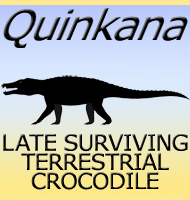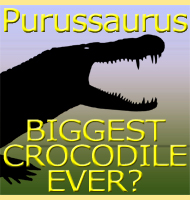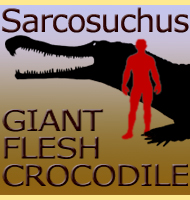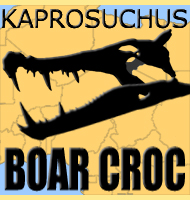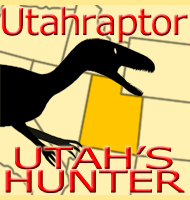


Isisfordia
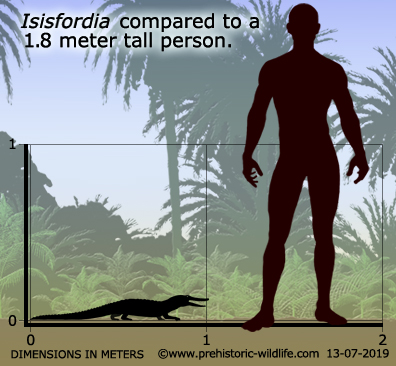
Name:
Isisfordia
(After the town near where the remains were discovered).
Phonetic: Eye-sis-for-dee-ah.
Named By: Salisbury et al - 2006.
Classification: Chordata, Sauropsida,
Crocodylomorpha, Eusuchia.
Species: I. duncani (type). I.
molnari, I. selaslophensis.
Type: Carnivore.
Size: 1 meter long.
Known locations: Australia, Queensland, Isisford -
Winton Formation.
Time period: Cenomanian of the Cretaceous.
Fossil representation: Almost complete individual,
and a second skull.
Although
crocodiles and indeed crocodile like reptiles have existed since the
Triassic, Isisfordia is considered to represent an
early member of the
group that make up modern crocodiles. This is evidenced by the ball and
socket type connection of the vertebrae, and the presence of a
secondary palate that allowed Isisfordia to breathe
in without passing
air through its mouth.
The
osteoderms that run along the back of Isisfordia
also show increased
signs of segmentation. Although not as broken up as modern crocodiles
today, they still show signs of greatly increased segmentation when
compared to their older relatives, meaning that Isisfordia
would have
appreciated a marked increase in flexibility.
While
the name Isisfordia is in reference to the town of
Isisford,
duncani is
actually in reference to the deputy mayor of Isisford
who discovered
the remains.
Further reading
- The origin of modern crocodyliforms: new evidence from the Cretaceous
of Australia. - Proceedings of the Royal Society B 273:2439-2448. - S.
W. Salisbury, R. E. Molnar, E. Frey & P. M. A. Willis. 2006.
- Isisfordia molnari sp. nov., a new basal
eusuchian from the
mid-Cretaceous of Lightning Ridge, Australia. - PeerJ. 7. - Lachlan J.
Hart, Phil R. Bell, Elizabeth T. Smith & Steven W. Salisbury -
2019.
- Taxonomic clarifications concerning the crocodyliform genus Isisfordia.
- PeerJ. 8: e8630. - Lachlan J. Hart - 2020.
----------------------------------------------------------------------------
Random favourites
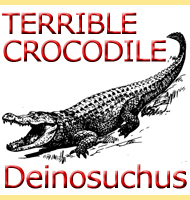 |
 |
 |
 |
